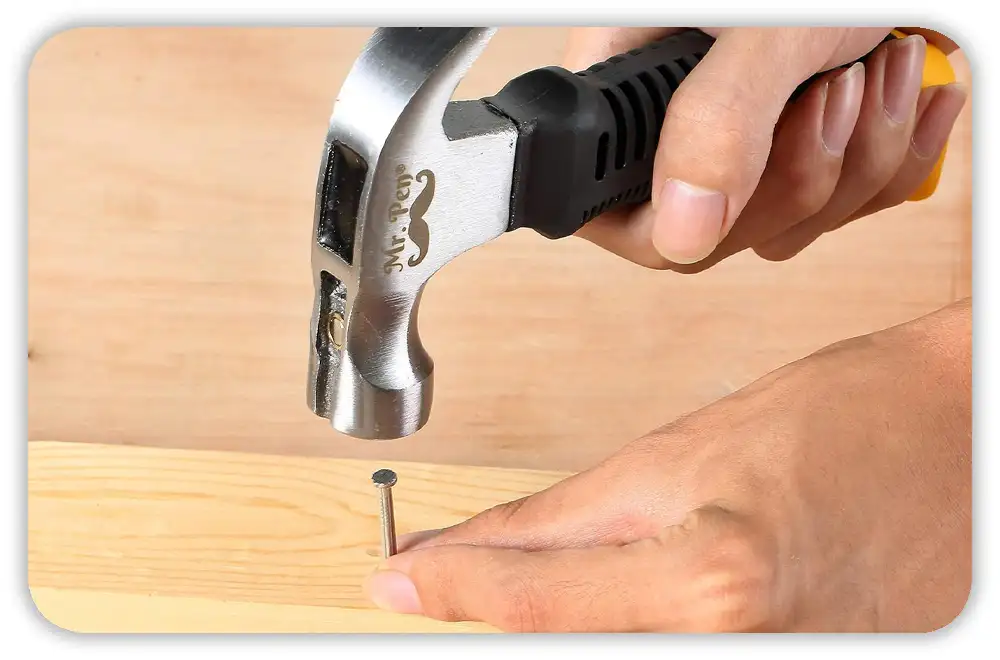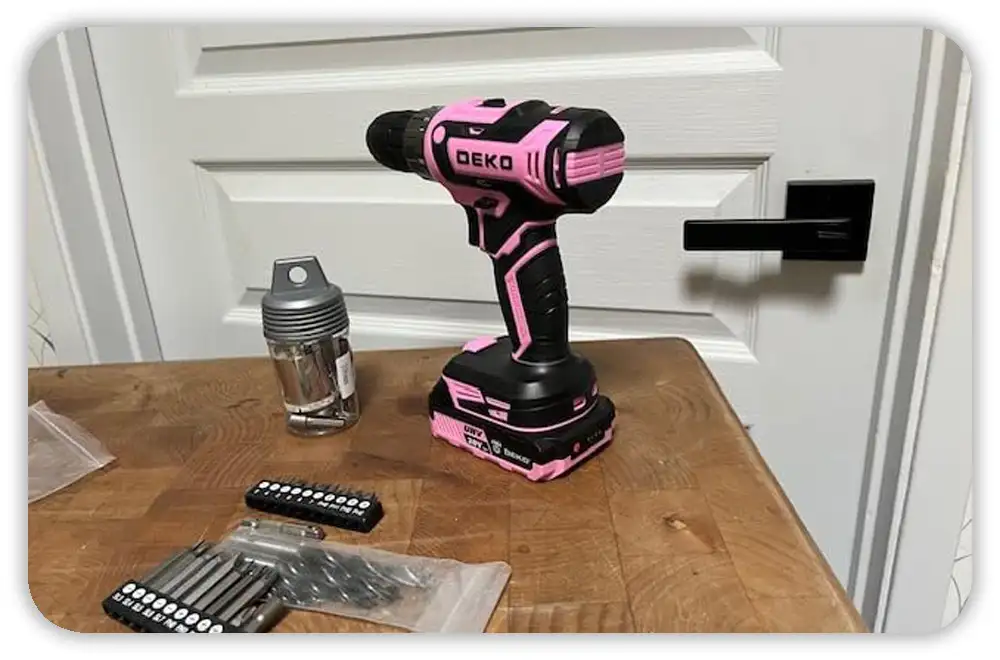When I bought my first home, I had no idea what tools I really needed. I figured a hammer and a few nails would do the trick. I was wrong.
One weekend project after another taught me a clear lesson — starting a home project without the right tools is like cooking without utensils. It’s frustrating, slow, and sometimes even risky.
Over time, I built a small collection that now makes every project easier and more enjoyable. Whether it’s tightening a hinge or hanging a shelf, these are the 7 essential tools for any home project I rely on every week.
Table of Contents
Claw Hammer – The First Tool I Ever Owned
A good hammer feels like a trusted friend. Mine is a 16-ounce Craftsman, and it’s been with me for years. It was my first real tool, and I still use it for everything from light repairs to bigger jobs like framing or decking.

What I’ve learned:
- Balance matters more than you think.
- A hammer that’s too heavy tires you out.
- One that’s too light won’t drive nails well.
- Look for a forged steel head and rubber handle that absorbs shock.
I borrowed my neighbor’s Estwing hammer once. That grip felt perfect. I bought my own the next day.
And yes, if you drop it on your foot, you’ll remember to wear shoes next time.
Screwdriver Set – My Everyday Problem Solver
If I had to pick one tool I use more than any other, it’s my screwdriver set. I use it every week — tightening door handles, replacing light plates, or assembling furniture.
My favorite is the Milwaukee multi-bit driver. It’s compact and the magnetic tips save a lot of time.
If you ever work near electrical outlets, use insulated screwdrivers that meet ANSI standards. It’s a simple safety step worth taking.
My tips:
- Keep both flathead and Phillips drivers.
- Have two or three sizes of each.
- You don’t need a huge set — just the right few.
I keep one multi-bit screwdriver in my junk drawer and another in my car. It saves the day more often than I expected.
Tape Measure – Measure Twice, Cut Once
I used to trust my eyes. Then I cut a board too short — three times. After that, I bought a 25-foot Stanley FATMAX, and it’s one of the best tools I own.

It’s easy to lock, easy to read, and doesn’t collapse when stretched out. Now I measure everything twice before I make a single cut.
For older U.S. homes with uneven walls, accuracy is key. A good tape measure keeps projects square and frustration low.
I finally bought a decent tape measure, and now my gallery wall looks like something out of Pinterest instead of a funhouse.
Tip: Write your measurements down right away. You’ll forget faster than you think.
Adjustable Wrench – The Silent Hero of Plumbing Fixes
When my bathroom faucet leaked one winter morning, I didn’t call a plumber. I grabbed my adjustable wrench. One quick turn fixed it.
My DeWalt wrench has a chrome finish that resists rust. The jaw turns smoothly even after years of use. It’s perfect for tightening nuts and bolts without rounding them off.
I keep one under the sink. It saved me from more than one expensive plumber visit.
After every job, wipe the wrench clean. It’ll last for years if you care for it.
Cordless Drill – My DIY Game Changer
Buying a cordless drill was the biggest upgrade to my toolkit. I went with the DeWalt 20V MAX, and it’s been worth every penny.

It drills through wood, drywall, and light metal. It also drives screws faster and cleaner than I ever could by hand.
Look for:
- Lithium-ion batteries that charge fast and hold power.
- Variable speed control for precision.
- Built-in LED light for dark corners.
I used to dread assembling furniture. Now I can build a bookshelf in under 15 minutes.
If you live in a humid area, keep your drill in a weather-resistant case. Moisture and batteries don’t mix.
Level – Keeping Things Straight Since Day One
I used to think I could eyeball straight lines. I was wrong. After hanging three crooked shelves, I finally bought a 24-inch spirit level.
Now, every picture frame, cabinet, and shelf is perfectly straight. For larger projects, I sometimes borrow a laser level from a friend. It’s faster and more precise.
In many U.S. homes, walls aren’t perfectly even. A level makes sure your finished work looks clean and professional.
My wife stopped trusting my ‘eyeballing’ skills. The level restored her faith — and my walls.
Utility Knife – The Tool You Don’t Realize You Need
At first, I thought a utility knife was optional. Now it’s one of the tools I use most. I open boxes, trim caulk, score drywall, and cut rope with it.
I use a Stanley retractable knife with replaceable blades. Always keep blades sharp — dull ones slip and cause cuts.
When cutting thicker materials, wear cut-resistant gloves that meet OSHA safety standards. A little caution saves a lot of pain.
My old dull knife once tore drywall instead of cutting it clean. A sharp blade made all the difference.
And one rule I never break: retract the blade as soon as I’m done.
Building My Toolbox Over Time
I didn’t buy all these tools at once. I started with a hammer and screwdriver, then added others as I tackled more projects. Building your kit this way saves money and teaches you what you actually use most.
Here are a few extras that make life easier:
- Safety glasses (ANSI-rated)
- Work gloves with grip
- Pegboard wall for organization
- Headlamp for attic or basement repairs
Each one seems small, but together they make every job safer and smoother.
Final Thoughts
Building your toolbox isn’t just about collecting tools. It’s about building confidence. Once you have these 7 essential tools for any home project, you’ll handle most repairs on your own.
You won’t need to wait for help or pay for every small fix. And the best part is that moment when you stand back and think, I did that myself.
FAQs – 7 Essential Tools for Any Home Project
What are the most essential tools every homeowner should have?
A hammer, screwdriver set, tape measure, adjustable wrench, cordless drill, level, and utility knife cover most home repair and DIY tasks.
Which cordless drill is best for home projects?
The DeWalt 20V MAX cordless drill is a solid choice. It’s powerful, lightweight, and great for everyday DIY jobs around the house or garage.
How do I start building a basic home tool kit?
Start small — get a hammer, screwdriver, and tape measure. Add tools like a drill or wrench as new projects come up. Build your set over time.
Why is a level important for home projects?
A level helps you hang shelves, frames, or cabinets straight. It keeps projects aligned, especially in older U.S. homes where walls aren’t even.
How do I keep my tools in good shape?
Wipe them clean after use, store them in a dry place, and oil metal parts if needed. Use a pegboard or toolbox to keep everything organized.

